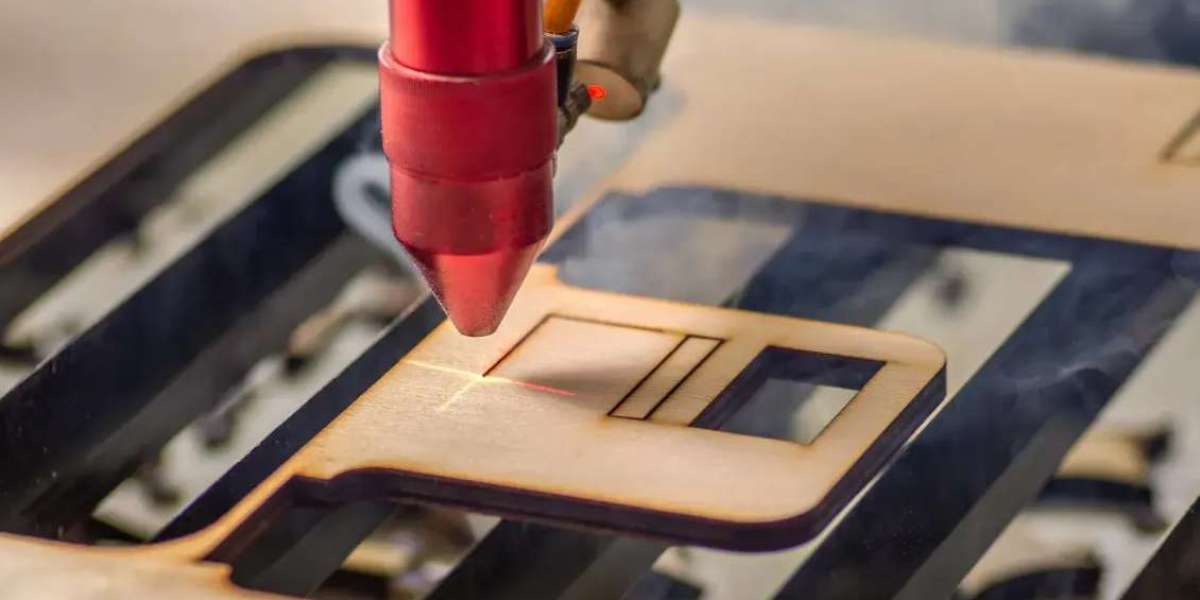In today's world of rapid innovation and custom fabrication, laser cutting has emerged as a cornerstone technology. Whether you're an industrial manufacturer, a product designer, or an artist, laser cutting allows you to turn digital designs into physical reality with unmatched precision and speed.
This article explores laser cutting from the ground up—how it works, the types of lasers used, the materials it can cut, and how it’s being used to shape everything from aerospace parts to fashion accessories.
What Exactly is Laser Cutting?
Laser cutting is a method of slicing through materials using a concentrated beam of light generated by a laser source. Unlike mechanical cutting tools that rely on blades or abrasives, laser cutting is a non-contact process, which means there is no physical pressure or wear on the material.
The laser is powerful enough to melt, burn, or vaporize the material in its path. At the same time, a jet of gas clears away the melted material, resulting in a clean, sharp cut edge with minimal need for finishing.
How Laser Cutting Works: The Core Process
Here’s a breakdown of the laser cutting process:
Laser Beam Generation: A laser source (CO₂, fiber, or crystal-based) creates a high-energy beam of light.
Focusing the Beam: Lenses or mirrors focus the beam to a fine point, increasing its intensity.
Material Contact: The focused beam hits the material, rapidly heating it to its melting or vaporization point.
Assist Gas Flow: Gases like oxygen or nitrogen blow away molten debris, ensuring a clean cut.
Precision Movement: A CNC (computer numerical control) system moves the beam or workpiece according to a programmed design.
Major Types of Laser Cutting Systems
Different laser types are used depending on the material and application:
1. CO₂ Lasers
Common Applications: Cutting non-metals like wood, acrylic, leather, paper, and textiles.
Advantages: Excellent engraving ability, cost-effective for softer materials.
Limitations: Less effective on reflective metals.
2. Fiber Lasers
Common Applications: Cutting metals such as steel, aluminum, and copper.
Advantages: Fast cutting speeds, low maintenance, energy efficient.
Limitations: Less suited for cutting non-metal materials.
3. Crystal Lasers (Nd:YAG or Nd:YVO4)
Common Applications: Engraving or micro-cutting in electronics and medical industries.
Advantages: High precision for detailed work.
Limitations: Higher maintenance costs and shorter lifespan compared to fiber lasers.
Materials That Can Be Laser Cut
Laser cutting is compatible with a wide variety of materials. The key requirement is that the material can absorb the laser energy efficiently.
Metals:
Mild steel, stainless steel, aluminum, brass, titanium, copper
Plastics:
Acrylic, ABS, polyethylene, PETG, polycarbonate (some require ventilation due to fumes)
Organic Materials:
Wood, MDF, plywood, cardboard, leather, fabric
Others:
Paper, foam, rubber, some ceramics, and even certain types of glass (usually etched, not cut)
⚠️ Always verify safety: Some materials like PVC emit toxic fumes and should not be laser cut without specialized extraction systems.
Advantages of Laser Cutting
Laser cutting offers multiple benefits over traditional cutting methods:
1. Unmatched Precision
The beam can cut intricate patterns and tiny holes with tolerances within 0.1 mm, making it ideal for detailed work.
2. Fast and Efficient
Laser systems can operate continuously and at high speeds, especially when cutting thin materials.
3. Minimal Waste
Because of the narrow kerf (cut width), there's very little material loss, which helps reduce production costs.
4. Versatile Design
Digital designs (CAD files) can be quickly turned into physical products, supporting rapid prototyping and on-demand production.
5. Low Maintenance
As there are no physical cutting tools involved, wear and tear are minimal compared to mechanical processes.
Real-World Applications of Laser Cutting
Laser cutting isn’t confined to factories; it’s used in diverse fields where customization, quality, and precision are essential.
1. Aerospace & Automotive
Used to fabricate lightweight components, structural parts, and intricate ventilation or heat dispersion systems.
2. Electronics
Precision cutting and engraving for printed circuit boards, battery packs, and internal metal shielding.
3. Architecture & Interiors
Custom metal panels, screens, and decorative elements for modern buildings and interior spaces.
4. Fashion & Jewelry
Detailed pattern cutting for leather, fabric, and metal used in accessories, watches, and luxury goods.
5. Education & Makerspaces
Used in classrooms and DIY labs for prototyping, student projects, and small-run product design.
Safety and Best Practices
Though laser cutting is relatively safe when done correctly, operators must follow precautions:
Eye Protection: Always wear goggles appropriate for the laser's wavelength.
Ventilation: Use proper fume extraction systems to remove smoke and toxic gases.
Fire Safety: Never leave the machine unattended; laser beams can ignite flammable materials.
Machine Maintenance: Regularly clean lenses, inspect nozzles, and check alignment to ensure consistent cutting quality.
Limitations of Laser Cutting
While laser cutting is a powerful tool, it’s not perfect for every situation:
High Initial Cost: Industrial-grade machines and fiber lasers come with a high upfront investment.
Material Thickness: Cutting very thick materials can be slow or require higher power lasers.
Reflective Metals: Metals like copper and aluminum can reflect laser energy, requiring specific machine settings.
Burn Marks: On certain materials (like wood), cutting may cause discoloration or charring on the edges.
The Future of Laser Cutting
Innovation in laser cutting is moving at a rapid pace. Here’s what to expect in the coming years:
AI and Automation: Intelligent laser systems that optimize speed, quality, and maintenance automatically.
3D Laser Cutting: Systems capable of cutting complex 3D shapes for parts like automotive tubing.
Hybrid Machines: Integration of laser cutting with 3D printing and robotic arms for full-process automation.
Sustainable Cutting: Eco-friendly systems that reduce energy use and work safely with recyclable materials.
Conclusion: Where Light Meets Innovation
Laser cutting stands at the intersection of engineering and creativity. It transforms digital designs into tangible objects with stunning accuracy and speed. From heavy industry to hobbyist projects, laser cutting is powering the future of design, manufacturing, and art.
As machines become smarter and more accessible, laser cutting is no longer reserved for high-tech factories—it’s now a tool for anyone who values precision, innovation, and flexibility in fabrication.



